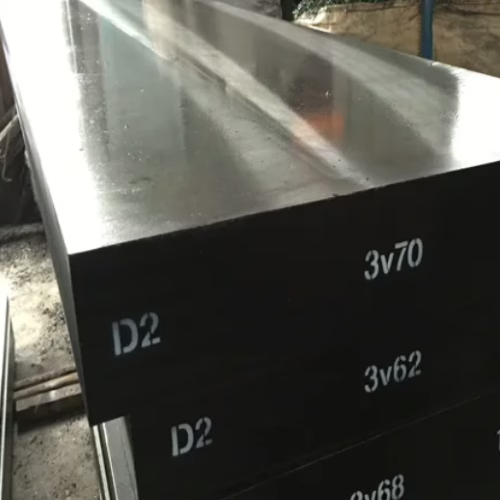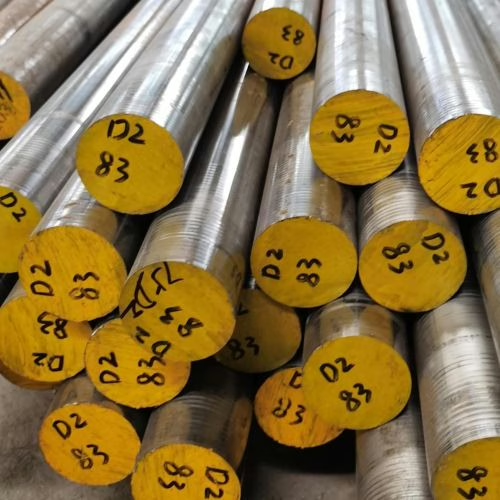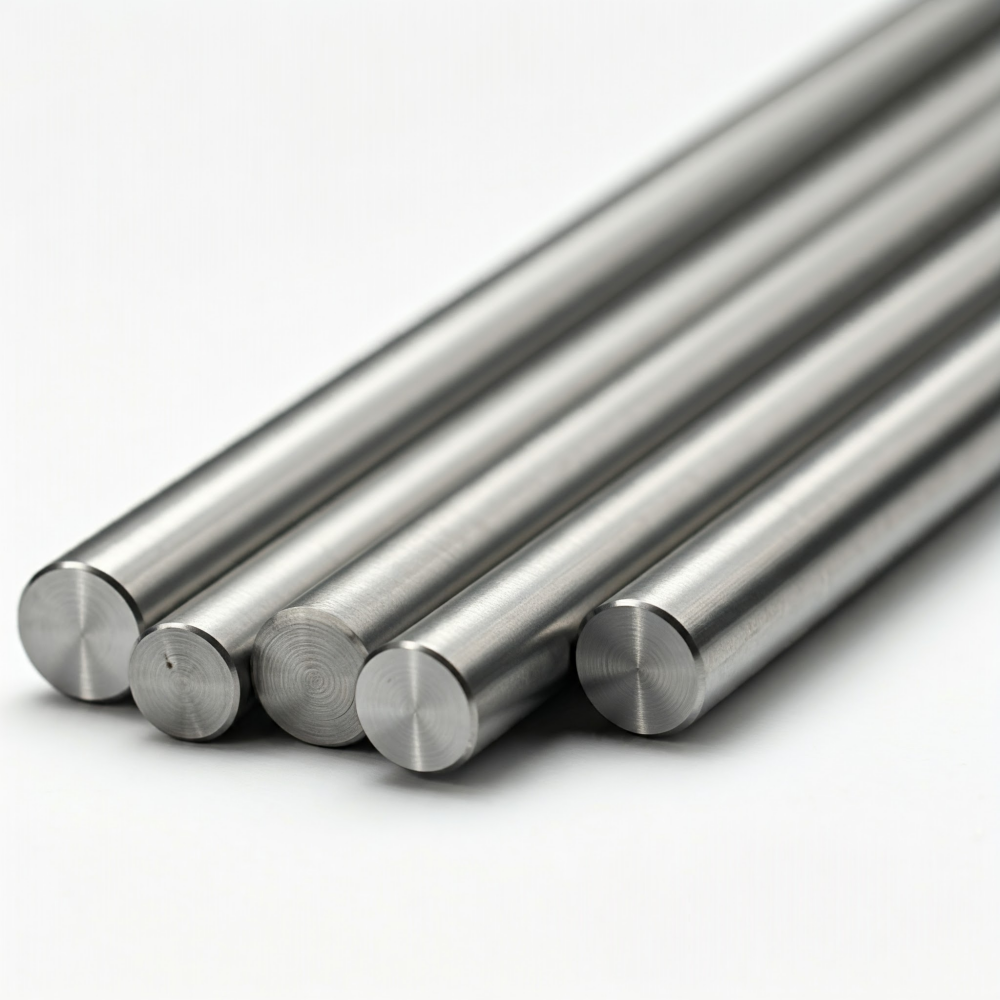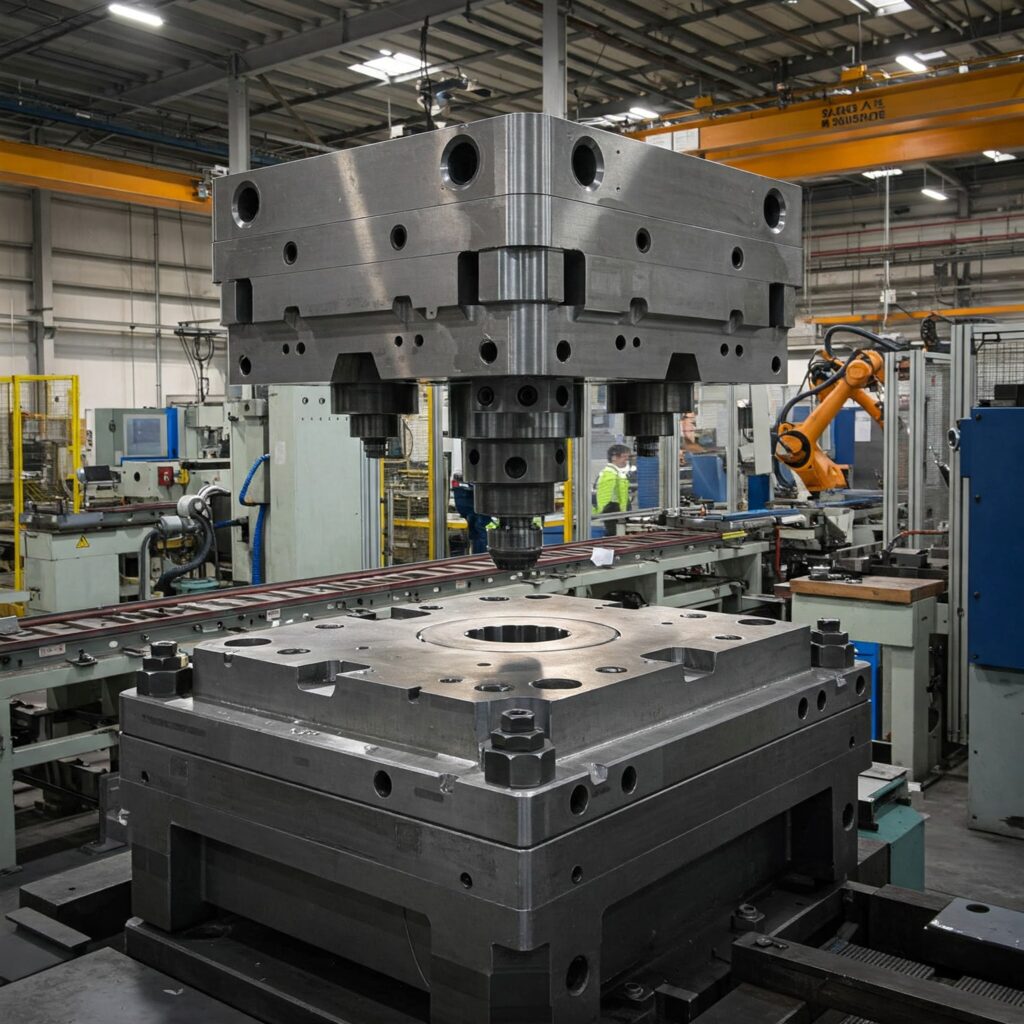Estimated reading time: 5 minutes
Key Takeaways
- D2 tool steel hardness relies on its chemical composition, heat treatment, and microstructural factors.
- Key alloying elements include carbon for maximum hardness, chromium for wear resistance, and molybdenum/vanadium for secondary hardening.
- Heat treatment factors like austenitizing temperature, cooling rate, and tempering influence hardness and toughness in D2 steel.
- Surface treatments and geometric dimensions also impact hardness and machining characteristics of D2 workpieces.
- Overall, precise control of the heat treatment process optimizes D2 tool steel’s hardness, wear resistance, and toughness.
Table of contents
D2 tool steel is a high-carbon, high-chromium, air-hardening steel. Its hardness is affected by chemical composition, heat treatment parameters, and microstructural interactions.
Here are the detailed factors affecting D2 tool steel hardness.
The Critical Role of Chemical Composition
The composition of D2 steel is1
| Carbon (C) | Chromium (Cr) | Molybdenum (Mo) | Vanadium (V) | Manganese (Mn) | Silicon (Si) | Phosphorus (P) | Sulfur (S) |
| 1.40 – 1.60 | 11.00 – 13.00 | 0.70 – 1.20 | 0.50 – 1.10 | 0.10 – 0.60 | 0.10 – 0.60 | ≤ 0.030 | ≤ 0.030 |
- Carbon (C). Carbon content is the primary element affecting the maximum hardness of martensite. When the carbon content of D2 steel is approximately 1.5%, it achieves a high degree of hardness.
- Chromium (Cr). Chromium significantly improves the wear resistance of D2 steel by forming a large amount of high-hardness M7C3 alloy carbides. The high chromium content also gives D2 steel stain resistance.
- Molybdenum (Mo) and Vanadium (V). These elements are hard alloying elements that enhance wear resistance and enable D2 steel to undergo secondary hardening during the tempering process. They also give D2 high hardenability, enabling air quenching, which has the advantage of providing D2 steel with excellent dimensional stability. Vanadium can form extremely hard MC-type carbides, such as VC, with a hardness of up to 2520 HK.
- Manganese (Mn) and Silicon (Si). Although these elements do not have as significant an effect on maximum hardness as carbon or carbide-forming elements, they do contribute to hardenability.


Heat Treatment Parameters
Appropriate D2 tool steel heat treatment also has a decisive influence on its hardness. It adjusts the hardness of D2 tool steel by altering the steel’s microstructure. For detailed information on this topic, please refer to ‘How to Properly Heat Treat D2 Steel.‘
Austenitizing Temperature and Time
Heating D2 steel to the austenitizing temperature of 980-1010°C / 1800-1850°F dissolves a large amount of carbides, enriching the austenite with alloying elements such as carbon, chromium, and molybdenum. This enriched austenite is crucial for achieving high martensitic hardness upon quenching. The optimum temperature range for maximum hardness is specific for each D-type steel.
Higher austenitizing temperatures result in greater alloy carbide dissolution and a higher enrichment of austenite with carbon and carbide-forming elements. This can increase the amount of retained austenite in the as-quenched microstructure. Retained austenite is a softer phase, and excessive amounts can result in lower as-quenched hardness and dimensional instability over time. However, it can be beneficial for toughness if properly controlled.
Quenching Medium and Cooling Rate
Quenching can transform the austenite inside D2 steel into martensite, which is a hard matrix. D2 steel is an air-hardening steel that can be tempered after cooling to 65°C (150°F) in air. Larger pieces of D2 steel can be cooled evenly with a fan.
Tempering Temperature and Time
Tempering is a crucial post-hardening heat treatment that adjusts hardness, relieves internal stresses, and significantly increases toughness for D2 tool steel.
D2 steel can achieve a hardness of approximately 62 HRC with a single tempering at 205°C (400°F). However, using a higher temperature for double tempering, such as 515°C/960°F for the first tempering and 480°C/900°F for the second tempering, typically results in a lower hardness of 58 HRC. Nevertheless, this process improves the grain structure, extends wear resistance, and increases the service life.
The relationship between the tempering temperature and the hardness of D2 steel2
| Tempering Temperature | Rockwell C |
| As quenched | 64 |
| 300 °F / 150 °C | 61 |
| 400 °F / 205 °C | 60 |
| 500 °F / 260 °C | 58 |
| 600 °F / 150 °C | 58 |
| 700 °F / 370 °C | 58 |
| 800 °F / 425 °C | 57 |
| 900 °F / 480 °C | 58 |
| 960 °F / 515 °C | 58/60 |
| 1000 °F / 540 °C | 56 |
| 1100 °F / 595 °C | 48 |
D2 Steel Workpiece Characteristics and Processing
In addition to the inherent properties and heat treatment of D2 material, its initial state, dimensions, geometric shape, and surface treatment also affect hardness.
- D2 is typically machined in the annealed condition (approx. 220 HB maximum annealed hardness) to facilitate processing before final hardening.
- The dimensions and structure of D2 parts affect the cooling rate during quenching, which in turn affects hardness uniformity.
- Manufacturing processes like grinding or electrical discharge machining (EDM) can introduce surface defects or alter surface hardness. Reaustenitizing and quenching can occur on the surface of ground tools, leading to high hardness and brittleness.
- Nitriding can significantly increase the surface hardness of D2 (e.g., 750-1200 HV) without adding a thick layer. This treatment is especially beneficial for wear resistance and is applied at temperatures that require the steel to have good tempering resistance.
Summary
The high hardness of D2 tool steel comes from the high-hardness martensite formed by its high carbon content. Precise control of the austenitizing temperature of D2 steel, along with multiple tempering processes, can be used to adjust its hardness, wear resistance, and toughness.


